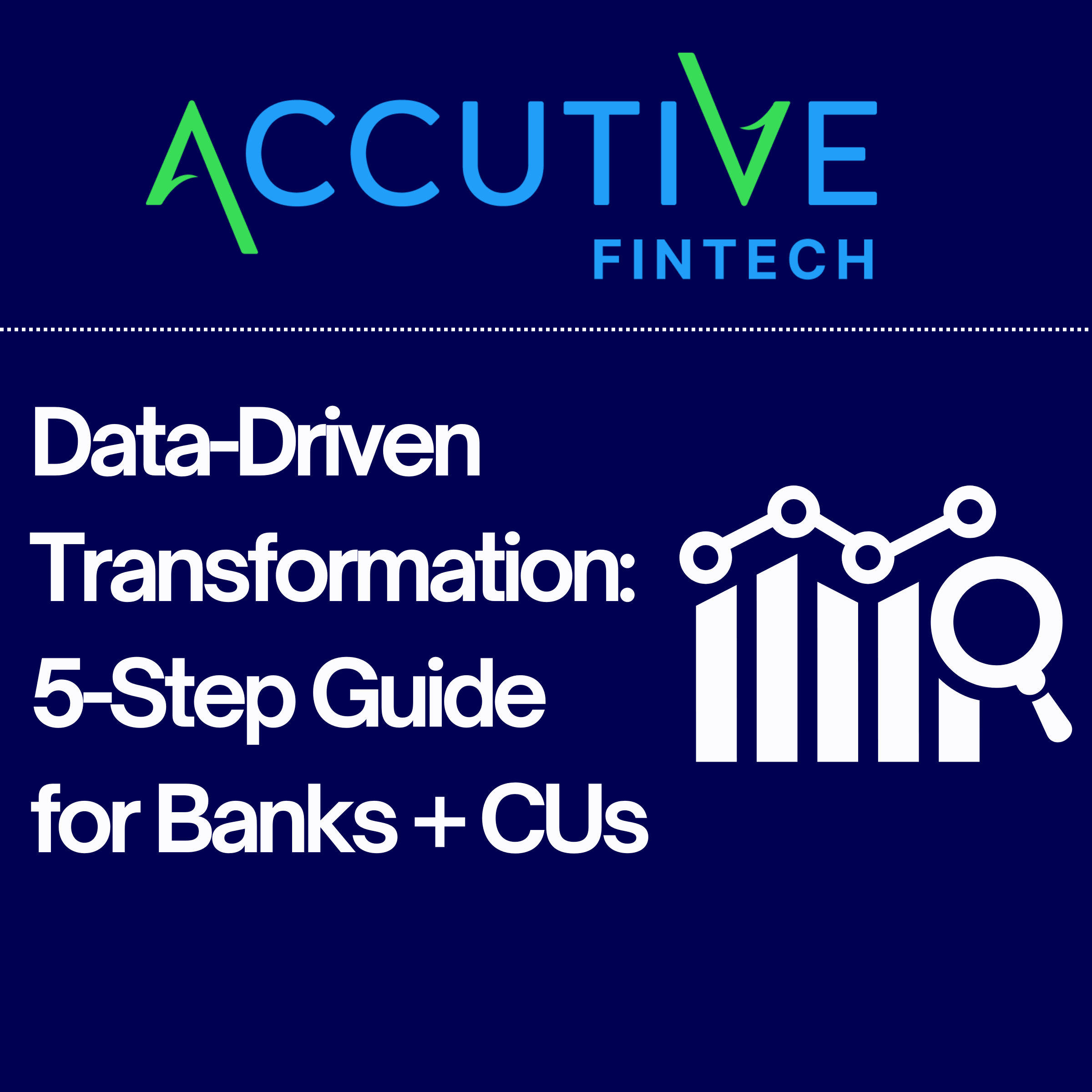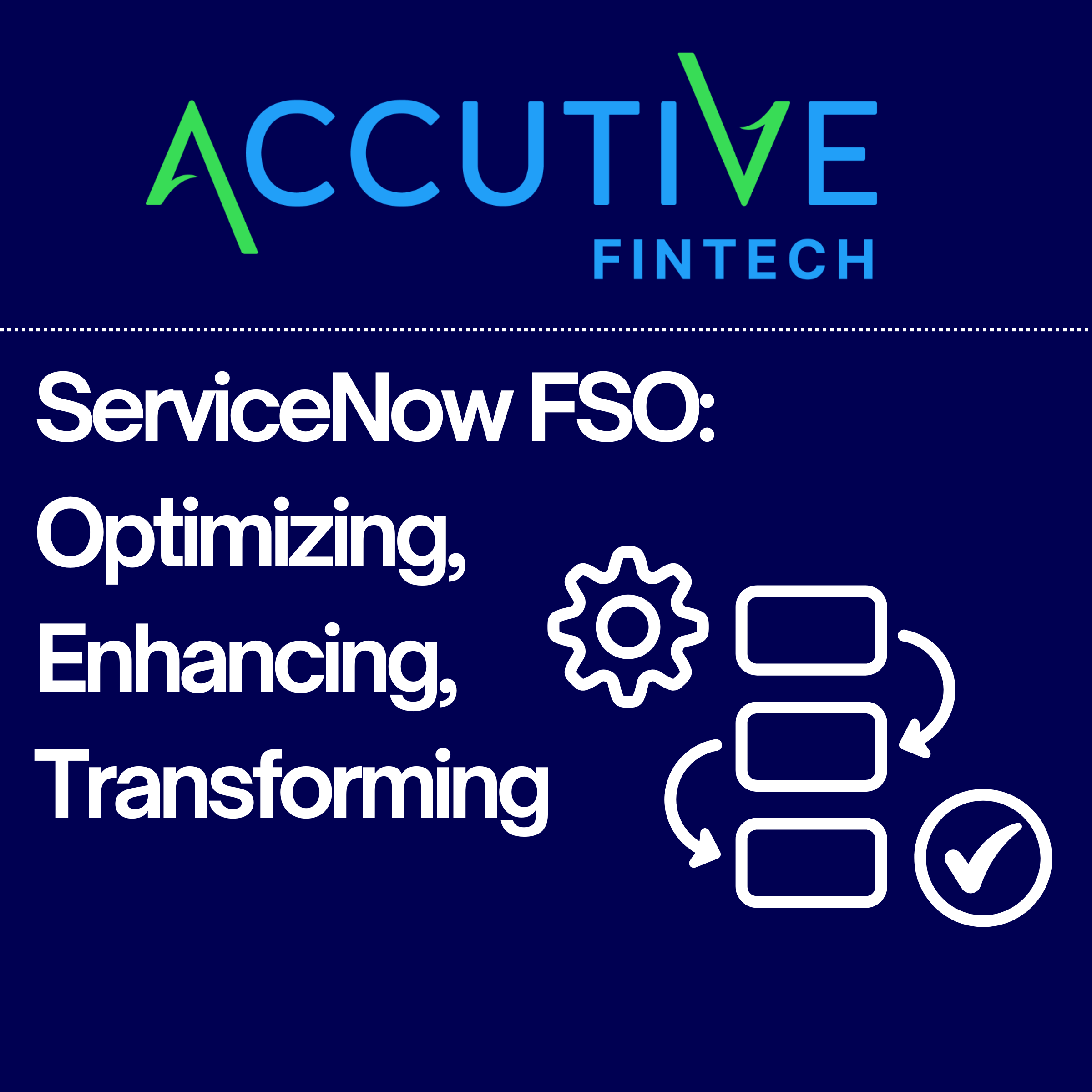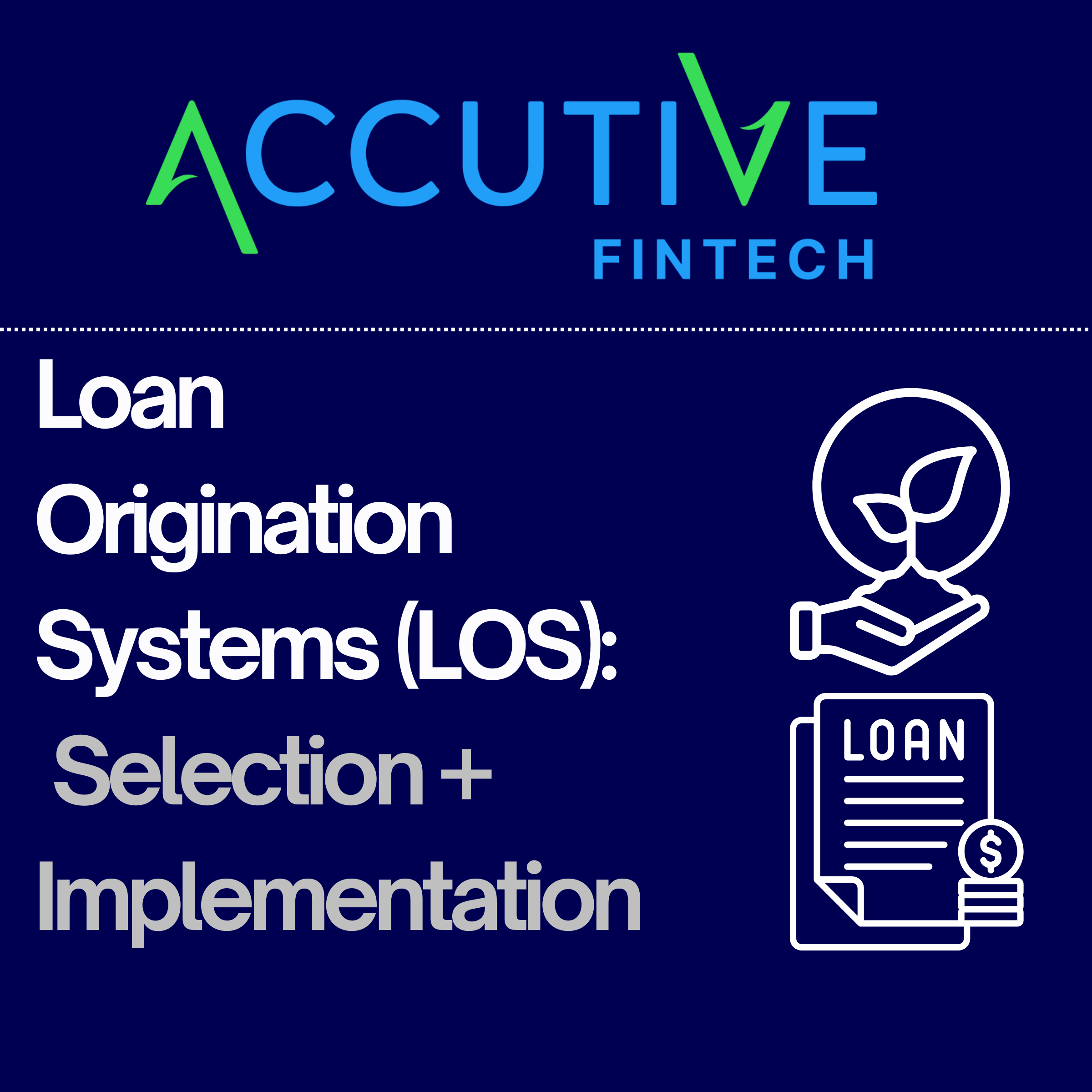For today’s banks and credit unions, data is the key to innovation and competitiveness. Yet, despite its importance, many financial institutions struggle to harness their data effectively. The reasons include fragmented systems, lack of integration, data silos, poor data management practices, limited expertise, and the absence of a clear strategy.
Becoming a data-driven financial institution can seem daunting for banks and credit unions struggling with these issues; fortunately, there is hope. Data-driven transformation is achievable for financial institutions of all sizes, including small credit unions and community banks.Advancements in integration platforms, automation, and AI make the transition easier and more cost-effective than ever before.In five steps, financial institutions can dramatically transform their approach toward data, becoming more competitive and secure as a result.
Data-Driven Transformation Step 1: Foster a Data-Driven Culture
Becoming a data-driven organization isn’t just about technology—it starts with people and a strategic vision that aligns leadership, governance, and technology. A true data-driven culture ensures that data is trusted, accessible, and actively used to inform decision-making at every level of the organization.
To achieve this, financial institutions need a top-down strategy that prioritizes data governance, clear communication, and the right technology investments.
Key Considerations:
- Leadership Commitment – From executives down, all leaders must champion data initiatives, communicate their value, and allocate resources to support transformation.
- Data Governance & Stewardship – Establish clear policies for data management, security, and compliance, ensuring consistency and regulatory alignment.
- Company-Wide Data Literacy – Provide role-specific training so employees at all levels can interpret and use data effectively and securely.
- Technology Strategy – Invest in data management tools, AI analytics, and integration platforms (iPaaS) to enable seamless data utilization.
Shifting organizational culture is the first step toward data-driven decision-making, enhanced customer experiences, improved efficiency, greater compliance, and elevated innovation. Cultural shifts are often challenging and should be executed in accordance with an organizational change management plan.
Data-Driven Transformation Step 2: Streamline Data Integrations
Most financial institutions operate within complex ecosystems of disconnected platforms—core banking systems, CRM, lending platforms, compliance tools, and more. Without integration, valuable data remains siloed, reducing efficiency and decision-making capabilities.
An Integration Platform as a Service (iPaaS), such as MuleSoft, is recommended to act as the backbone of your institution’s data infrastructure, ensuring secure, real-time data sharing across all systems.
Key Outcomes of Streamlined Data Integrations
- Cost Efficiency: On average, organizations have reported a 413% return on investment (ROI) over three years with iPaaS, generating an average annual ROI of $2.2 million.
- Accelerated Integration: iPaaS can reduce development timelines for integrations by 64%, enabling faster deployment of new services and features.
- Enhanced Productivity: By automating manual tasks, iPaaS solutions save business teams approximately 100 hours per year, allowing staff to focus on strategic initiatives.
- Improved Performance: Organizations utilizing iPaaS have experienced a 64% increase in productivity and a 78% acceleration in deployment times, leading to more efficient operations.
By adopting an iPaaS, financial institutions can streamline operations, reduce the costs associated with maintaining custom integrations, and enhance overall performance compared to disparate data silos.
Data-Driven Transformation Step 3: Strengthen Data Governance and Security
Effective data utilization must go hand in hand with robust security and regulatory compliance. With increasing regulatory scrutiny and rising cyber threats, financial institutions must implement a comprehensive data governance framework.
Avoiding Costly Data Breaches
Data breaches in the financial sector are not only frequent, but also exceedingly costly. According to IBM’s 2024 Cost of a Data Breach Report, the average cost of a data breach in the financial industry has risen to $6.08 million, reflecting a 3% increase from the previous year. In Canada, the financial sector experiences even higher costs, with breaches averaging CA$9.28 million.
These figures underscore the critical importance of implementing a comprehensive data governance framework and utilizing advanced test data management tools to mitigate your risk and ensure compliance.
The Challenging Financial Services Regulatory Environment
Financial institutions must adhere to a myriad of regulations, including:
- PCI DSS – Enforces strict guidelines for payment card security and fraud prevention.
- Basel III – Mandates robust data governance for financial risk management, data lineage, and validation.
- Dodd-Frank Act – Requires transparent and timely reporting of financial transactions to prevent systemic risks.
- Gramm-Leach-Bliley Act (GLBA) – Obligates financial institutions to protect consumer financial information through comprehensive security programs.
Importance of Test Data Management
Implementing a comprehensive test data management tool that works across all major databases, like Accutive Data Discovery + Masking (ADM), is crucial to ensure that development and testing environments use realistic yet compliant data. ADM allows institutions to:
- Create anonymized datasets that mirror your production data, preserving data relationships across multiple databases while safeguarding sensitive information.
- Locate your sensitive data across all databases and file types, and build subsets.
- Maintain compliance with data privacy regulations by preventing unauthorized access to personally identifiable information (PII).
Data-Driven Transformation Step 4: Optimize Data for Business Insights
Securing and integrating data is essential, but financial institutions must also structure and analyze their data effectively to unlock actionable insights. Many banks and credit unions struggle with inconsistent reporting, poor data quality, and siloed analytics, limiting their ability to use data strategically.
Even if your data processes are highly disjointed and inconsistent today, your financial institution can realize quick wins by adopting a methodical approach to your how you structure, interact and manage your data.
Key Principles:
- Data Architecture & Warehousing – Establish a centralized, scalable infrastructure for accessibility and efficiency.
- Data Quality & Standardization – Apply data governance principles with cleansing, validation, and deduplication processes.
- Advanced Analytics & Reporting – Use predictive modeling and real-time dashboards to drive business decisions.
- Operational Intelligence – Leverage historical data to refine pricing models and assess risk.
Why It Matters:
- Better Decision-Making – Leadership can rely on accurate, structured data for strategic planning.
- Improved Risk Management – Advanced analytics help identify threats before they escalate.
- Stronger Customer Insights – Data-driven personalization enhances customer satisfaction and retention.
A well-structured data ecosystem enables banks and credit unions to move from reactive to proactive decision-making.
Data-Driven Transformation Step 5: Automate for Efficiency and Growth
To remain competitive, financial institutions must reduce manual processes and leverage automation to improve efficiency, accelerate lending decisions, and strengthen fraud detection.
By integrating automation and AI-driven workflows, banks and credit unions can scale operations, minimize errors, and improve compliance.
Key Areas for Automation:
- Automated Data Pipelines – Ensure real-time data synchronization across all your critical systems. For example, ensuring smooth flow through from your digital account opening platform to your digital banking and core banking systems.
- AI-Powered Fraud Detection – Identify suspicious activity instantly to reduce financial risk.
- Loan Origination & Credit Decisioning – Automate workflows and underwriting to speed up approvals.
- Regulatory Compliance Automation – Streamline reporting and audits to ensure adherence to industry regulations.
Why It Matters:
- Greater Efficiency – Reducing manual tasks allows teams to focus on high-value initiatives.
- Enhanced Security – AI-driven monitoring detects fraud and anomalies in real time.
- Scalability & Cost Savings – Automated workflows support growth without increasing overhead.
Automation allows financial institutions to improve accuracy, reduce costs, and deliver seamless digital experiences.
Accelerating your Data-Driven Transformation
The first step toward becoming a truly data-driven financial institution is understanding where your current data approach to data stands compared with industry best practices. From this assessment you can identify and understand where you have gaps in your approach to data, particularly with respect to integration, security, and governance. Without a clear understanding of where your financial institution stands, it is difficult to develop a clear and actionable roadmap for your organization’s data-driven transformation.
Accutive FinTech provides comprehensive data integration, security, and governance assessments that provide you with clear roadmap for transformation by:
- Evaluating System Integration & Data Flow – Identifying gaps in connectivity between core banking, LOS, CRM, and compliance systems to ensure seamless, real-time data exchange.
- Assessing Data Security & Compliance Risks – Using ADM data discovery across all your sensitive data locations, access controls, and encryption practices to help understand your data and ensure that you are compliant with relevant industry regulations such as PCI DSS, GLBA, Basel III, and SOX.
- Auditing Data Quality & Governance Framework – Reviewing the overall health of your data, your data governance framework, and how effectively it is being applied to achieve desired security and compliance outcomes.
- Defining an AI-Ready Data Strategy – Assessing how well-structured data is for automation, predictive analytics, and AI-driven decision-making.
Accutive FinTech’s data assessments have helped some of North America’s most successful financial institutions assess, secure, and optimize their data infrastructure. Our Data Integration, Security, and Governance Assessment provides a customized action plan to streamline operations, enhance compliance, and unlock new opportunities.








